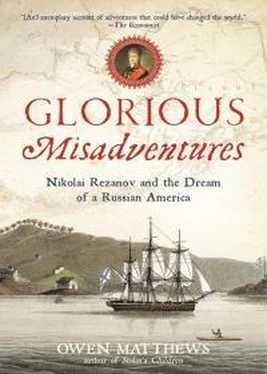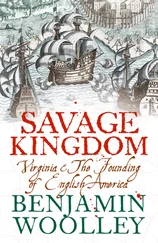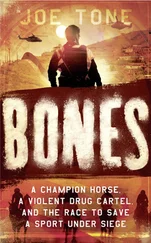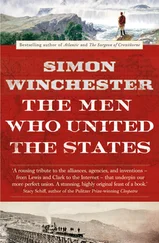In 1577 the Stroganovs recruited a young buccaneer named Yermak Timofeyevich. Yermak was a scion of a family of notorious river pirates who had plied the middle Volga but had found themselves out of business with the fall of Kazan and the establishment of Muscovite control over the great river. With his band of professional – and temporarily jobless – marauders Yermak headed eastwards, pushed deep into Tatar territory and in 1580 took Sibir. To placate the Tsar for taking such a step without royal permission, Yermak sent a vast haul of 2,500 sables to Moscow. Ivan was suitably impressed. In return for his gift, he made Yermak Muscovy’s viceroy in Siberia – just as Yermak’s former employer Stroganov had become lord of the Urals. Yermak also received a handsome suit of armour from the Tsar, which was to prove his undoing five years later as he attempted to swim away from a Tatar ambush but was drowned by his heavy breastplate.
Yermak was a Cossack, one of a growing community of men who had fled serfdom in Poland, Livonia and Muscovy and sought freedom in the no-man’s-land of the mid-Volga and the south-east steppes of European Russia. Cossacks were a social caste, not a racial or national group. Their freedom was a precarious one because of the regular Tatar slaving expeditions which filled the markets of Constantinople with hundreds of thousands of new Slavic captives every year. Moscow itself had been raided and burned by Khan Devlet Giray of Crimea as recently as 1571, and the Crimean Khanate would not be finally subdued until the reign of Catherine the Great in 1783.6 Ivan the Terrible, borrowing the Stroganovs’ methods, was the first tsar to harness these outlaws to the service of the state. In the absence of any natural boundaries to his fledging empire, Ivan offered the Cossacks freedom from serfdom and a licence to exploit native peoples in exchange for their service as guardians of Russia’s eastern and southern borderlands.
The Tsar organized the Cossacks into ‘hosts’, a military and administrative term for a tribe of armed colonists who could be instantly turned into a military force. The names of the successive hosts is a chronicle of Russia’s growing empire – Don, Kuban, Terek, Asktakhan, Ural, Orenburg, Siberian, Turkestan, Transbaikal, Amur, Ussuri. The Cossack sotni , or hundreds, elected leaders known as atamany , and when the host was not in state service it was free to explore – and maraud – on its own account.7
These Cossacks were tough men. ‘I believe such men for hard living are not under the Sunne, for no cold will hurt them,’ wrote Richard Chancellor of the men he saw on the northern Dvina in 1553. ‘Yea and though they lye in the field two monthes at such times as it shal freeze more than a yard thicke the common soldier hath neither tent nor anything else over his head.’8 Of the three drivers of Russia’s eastward expansion – the quest for security against the Tatars, a consciousness of its imperial destiny as the inheritor of Byzantium and the adventurous avarice of Cossacks – it was the last which was by far the most potent.
The Cossacks went east not as farmers or traders but as masters and conquerors. Muscovy was in many ways a kind of Christian khanate, and as they expanded eastwards the Russians behaved towards the natives exactly as the Tatars had behaved towards them. The peasantry was considered the personal property of the Tsar, tied to the land, and the nobility his servants. ‘When a poore Mousick meeteth with any of them [nobility or the emperor] upon the high way he must turn himself about, as not daring to look him on the face, and fall down . . . as he doth unto his Idol,’ wrote Giles Fletcher, another English visitor to the court of Ivan the Terrible.9
The Cossacks therefore saw themselves as a kind of eastbound horde. From the native peoples they encountered they demanded hostages and tribute – tellingly known by the Tatar term yasak . In many cases Cossacks also considered the ‘provision of women’ an obligation.10 In exchange, the natives would be brought under the protection of the Tsar – a dubious privilege, since it was mostly the Russians from whom the natives most needed protection – and spared massacre.11 Over in the New World the fledgling fur trade on Canada’s St Lawrence River and Hudson Bay was based on trapping and barter with the natives. On the east coast of North America the English colonies of Virginia and Charleston were made up of property-owning agriculturalists. In Russia, however, the colonization of Siberia began and remained an economy of confiscation – just as it was in the Spanish empire in Central and South America.
For those indigenous Siberian communities who refused to pay yasak the Cossack hosts held a crown licence, as one seventeenth-century charter put it, ‘to wage war and capture [native] children’.12 In 1642 the Buryat chief Bului was made to swear to his new Cossack overlords that his people would pay tribute in sables and foxes, or else ‘the sun will not shine on me, I will not walk the earth, I will not eat bread; the Russian sword will cut me down, the gun will kill me, fire will destroy all our villages’.13 Initially any native converts to Orthodoxy were spared the payment of yasak .* But by the mid-seventeenth century priests were accompanying Cossack raiders with orders to ‘burn all idols and toys’, herd natives into rivers for mass baptism and force them to choose just one wife.14 In 1706 all natives, regardless of religion, were made subject to the Russian yasak .15
The Cossacks were excellent at the application of violence, but not so good at grasping the principles of sustainability. The gathering of fur-tribute was more like mining than farming – when a particular area was exhausted of its population of fur-bearing animals, usually within two decades, they would move on to new lands.
On a modern map Siberia appears as a vast block of land stretching 170 degrees of longitude across almost half the earth. Cossack explorers, however, would have seen it as three separate, huge river systems: the Ob-Irtysh, the Yenisei and the Lena. Each river runs south to north and drains into the Arctic Sea an area bigger than the Nile basin.16 To the south of these great river systems lie the steppes of Eurasia, the historic highway of grassland which stretches from Manchuria to Hungary. But though more easily passable, the steppes were inhabited by civilized and warlike peoples such as the Bashkirs, Kazakhs and Kyrgyz, who were subdued by the Russian Empire only in the late nineteenth century. Moreover, they yielded no furs.
So the Cossacks became river farers and forest dwellers, making their zigzag way across Siberia up and down the great rivers and their tributaries in flat-bottomed boats, which they carried across the low hills between. Where they stopped, usually at the confluences of rivers, which were also often traditional native trading places, they built forts they called ostrogs . These rectangular timber compounds were around a hundred yards square with stockades ten to twenty feet high, with bastions mounting artillery in the corners and a parapet around the top. Inside, typically, were the house of the voevoda , or chief, a granary, barracks and a church.17 Groups of Cossacks caught by winter too far from the nearest ostrog would build zimoviye , so called from the Russian for winter. These fortified blockhouses would house as many as fifty men as they sat out the impassably deep snows and lethal frosts of the Siberian winter. In 1639, 120 years after the Spanish explorer Vasco Núñez de Balboa stood on a peak in Darien and became the first European to see the Pacific,* a Cossack party of trappers under Ivan Moskvitin crossed the Okhotsk Mountains and reached the ocean from the other side. Just fifty-eight years after Yermak had taken Sibir, Russians had crossed Siberia.
Читать дальше












